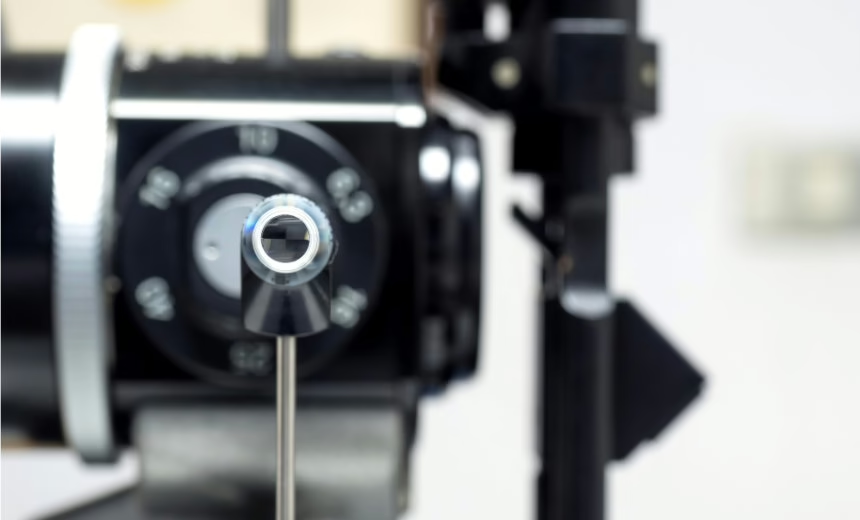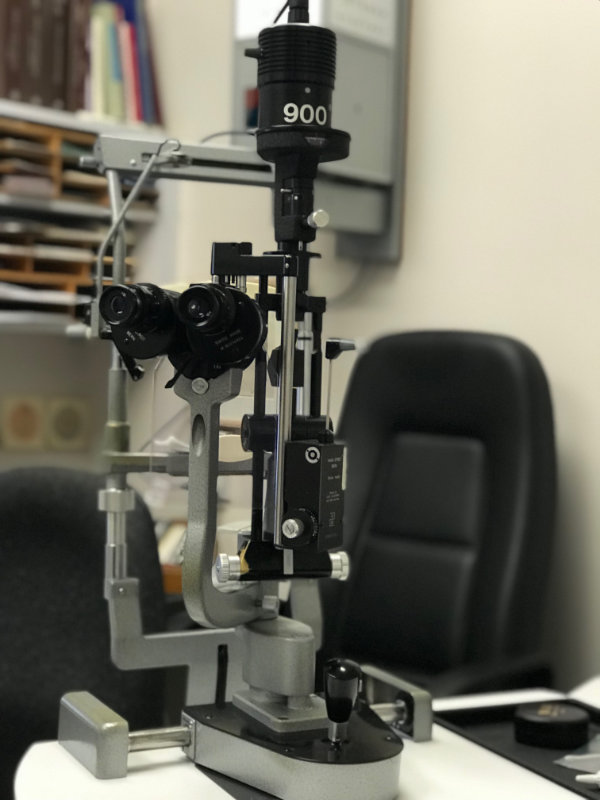Measuring IOP in the clinical setting
18/02/2025

CPD hours
Optometrists: This activity may be logged as self-directed learning for 16min of your required CPD hours (dependent upon your personal learning plan).
GPs: This activity may qualify as self-directed learning for 16min of your required CPD hours (educational activities).
Intraocular pressure (IOP) is a particularly useful parameter in evaluating the risk of optic nerve damage. While advances in tonometry technology now allow us to quickly measure a patient’s IOP in the clinic setting, it is just as easy to inadvertently affect the accuracy of the reading. Flow-on effects may include incorrect treatment and management plans and suboptimal patient outcomes, including visual field loss.
Methodology
Despite the availability of numerous tonometry methods, there is no single, perfect way to measure IOP – each comes with its own pros and cons. Applanation tonometry (based on the Imbert-Fick principle) is most commonly used and assumes a dry, thin-walled, elastic sphere where:
Pressure = Force/Area
In my opinion, the Goldmann Tonometer (GAT) still remains the gold standard. Introduced in 1954, it measures the force required to flatten a circular corneal area 3.06 mm in diameter (area of 7.35 mm2) – at this size, the amount of fluid displaced is miniscule (around 0.5mL) and the tonometer force becomes equal to the force inside the eye (mmHg).
True, it’s not portable, requires anaesthesia and must be sterilised, but it’s accurate and can detect both lower and higher IOPs (although perhaps not as high as some of the newer devices). Of course, errors can still be made when using GAT to measure IOP – below are some variables to consider.
Considerations when using GAT
- Fluoroscein ring too wide
- Overestimates IOP
- e.g. prism not dried after cleaning, prism makes contact with lids, too much fluorescein applied
- Fluoroscein ring too narrow
- Underestimates IOP
- e.g. insufficient fluorescein
- Elliptical fluorescein pattern
- Indicates significant corneal astigmatism because a steeper cornea requires more surface to be indented to produce the standard area of contact
- For every 3 D increase in corneal power, there is an overestimation of 1 mmHg
- Use an average of 2 readings 90° apart (vertical and horizontal alignment of prism)
- Central corneal thickness (CCT)
- Increased CCT overestimates IOP while decreased CCT underestimates IOP
- Remember that the range for normal CCT is wide (approx. 537–554 µm)
- Ask about previous refractive surgery
- Corneal oedema
- Underestimates IOP
- Corneal scarring
- Overestimates IOP
- Incorrect vertical alignment of semicircles
- Overestimates IOP
- Body mass index
- High BMI can lead to breathing problems and the Valsalva manoeuvre when the patient tries to position their head correctly on the slit lamp – this can lead to an overestimation of IOP
My top tips for consistently obtaining a precise and accurate IOP reading
- Make sure your tonometer is regularly and properly calibrated and disinfected.
- Clearly explain to the patient what you will be doing before you start.
- Make sure your patient is comfortably seated and not wearing tight clothing (including tight collars, ties or restrictive clothing around the neck area).
- Remind patients to breathe normally and not hold their breath – this is particularly important for those who may be anxious.
- Check that the patient is correctly positioned in relation to the slit limp (head/face should make appropriate contact with the corresponding forehead and chin rests and lateral canthi aligned with the line on the frame of the slit lamp).
- Make sure the contact area is free of debris.
- Evaluate the cornea prior to measuring IOP. If there is evidence of active corneal infections or defects in the corneal epithelium, use a non-contact method. Record any findings that may influence the patient’s IOP.
- Be careful not to apply external pressure to the globe when holding the lids open.
- Remind patients to relax and not try to squeeze their eyes shut.
- Obtain the reading from the central cornea (eye in primary gaze and focusing on distant object).
- Remember to note the time, date and method used.
Other methods
Of course, there are many other techniques apart from GAT that are useful in providing a quick estimate of IOP. Non-contact ‘air puff’ tonometry is particularly useful in children or anxious adults, although it’s not as accurate as using the GAT.
There’s also been much debate about new technology that allows patients to measure their own IOP. Given that we often rely on single measurements to guide treatment for glaucoma, this would obviously be ideal way to fill in the data gaps. However, a number of key challenges need to be considered:
- Validating the accuracy and precision of readings under varying conditions in the home setting
- Counselling patients to continue taking their medication as directed and returning for regular reviews, regardless of the IOP readings they obtain.
With careful patient selection and education, there could be an exciting role for self-tonometry in the future.
Dr Doug Roydhouse has considerable experience and expertise in the diagnosis and treatment of a range of ophthalmic conditions, including retinal diseases, cataracts and glaucoma. He currently concentrates his practice on consulting services for patients with general eye conditions. Dr Roydhouse practises at Vision Eye Institute Footscray.
This article is for educational and informational purposes only and may not be directly applicable to your individual patients.
Date last reviewed: 2025-02-18 | Date for next review: 2027-02-18
